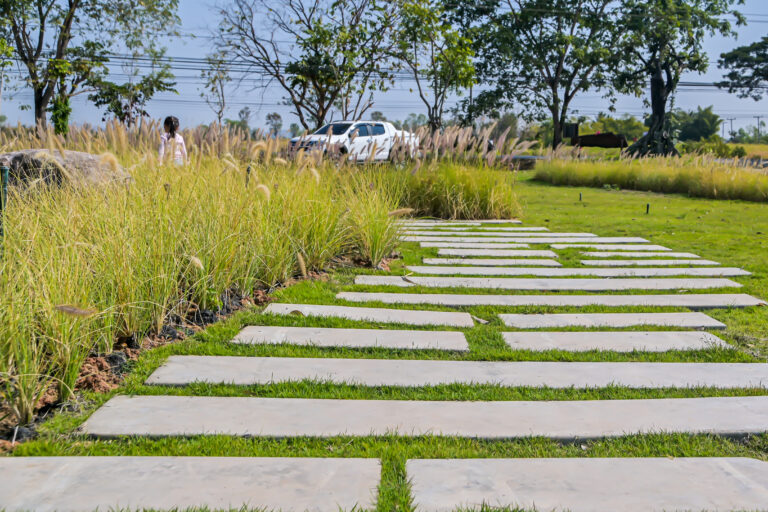How to Choose the Best Pavers for Your Patio: Expert Tips and Considerations

Choosing the best pavers for your patio can be a daunting task, especially with the wide variety of materials, colors, and patterns available in the market today. From natural stone to concrete, the options are endless for creating a beautiful, functional, and durable space to enjoy your outdoor living. To help you navigate this process, let’s explore some key factors to consider when selecting the perfect pavers for your patio.
First and foremost, it’s essential to determine the overall style and aesthetic you desire for your patio. Visualize how the pavers will complement your home’s architecture and existing landscape features. Consider factors such as color, texture, and pattern when choosing a material that will blend seamlessly with your outdoor space. Additionally, think about the purpose of your patio – whether it’s for entertaining, dining, or just relaxing – and decide on pavers that will support the intended use.
Lastly, take into account the overall cost and maintenance requirements of the selected material. Pavers come in various price points, and some may require more upkeep than others. Durable, low-maintenance materials might be more cost-effective in the long run, even if the initial investment is higher. With these considerations in mind, selecting the right pavers for your patio will be a breeze, and you’ll soon be enjoying a beautiful and functional outdoor living space.
Selecting the Right Materials for Durability and Aesthetics
Evaluate Different Types of Pavers
There are several types of pavers available in the market, including brick, stone, natural stone, and concrete pavers. Each has its own set of unique qualities and fits different design aesthetics. Thus, it’s essential to have a good understanding of the various types of pavers to find the best option for your patio.
- Brick Pavers: Made from clay, brick pavers are a timeless and efficient option. They’re available in a variety of colors and can be easily incorporated into different design styles.
- Concrete Pavers: These are versatile, durable, and cost-effective. Concrete pavers come in different shapes and sizes, making them suitable for various patio designs.
- Stone Pavers: Stone pavers encompass a range of natural stones, such as granite, limestone, and slate. They possess a unique, natural charm and provide a dependable and eco-friendly option.
- Natural Stone Pavers: These include fieldstone, flagstone, and other naturally occurring materials. Natural stone pavers offer unmatched elegance, with each stone being unique in texture and color.
Understanding Materials and Textures
It’s important to consider the texture of the pavers to ensure they complement your patio design and provide a safe surface to walk on. Textures can influence the overall appeal and functionality of your patio space, so make sure to keep them in mind while selecting the right materials for your project.
| Material | Texture | Aesthetic |
|---|---|---|
| Brick Paver | Rough, slip-resistant | Traditional, timeless |
| Concrete Paver | Smooth or textured | Modern, versatile, customizable |
| Stone Paver | Irregular, textured | Natural, appealing, classic |
| Natural Stone Paver | Unique, uneven | Rustic, charming, one-of-a-kind |
Considering Color and Design for Curb Appeal
Color is an essential factor when choosing the best pavers for your patio. It influences the overall aesthetic, mood, and curb appeal of your patio space. Consider choosing colors that reflect natural surroundings, aim to complement the exterior of your home or match the general theme of your landscape design.
- Neutral Colors: Earth tones like brown, beige, or gray are popular choices for a natural, unobtrusive look.
- Vibrant Colors: For a more eye-catching, lively appearance, consider using pavers in red, orange, or blue hues.
- Multicolored Pavers: Combining various tones can create intricate designs with a modern, artistic flair.
Incorporating different shapes and patterns into your patio design can also enhance its aesthetic appeal. Herringbone, basketweave, and running bond patterns with brick or stone pavers can add visual interest. Remember to strike a balance between aesthetics and durability while selecting materials for your patio, ensuring a beautiful yet functional outdoor space for years to come.
Practical Considerations for Installation and Maintenance
Preparing Your Patio Base and Installation Process
A proper patio base is crucial for the longevity and stability of your pavers. To prepare the base, start by excavating the area to an appropriate depth, typically 7-10 inches. Add a layer of gravel and compact it. This helps ensure proper drainage and prevents paver shifting. Add a layer of sand for bedding, ensuring it is level and even to provide a smooth surface for the pavers.
When selecting a paver pattern, consider the climate and rain as some patterns offer better drainage. Ensure that the pattern chosen is not only visually appealing but also practical for proper drainage and minimizing wear and tear.
Maintenance for Longevity and Appearance
For your patio to last and maintain its aesthetic appeal, regular upkeep is necessary. Here are some key maintenance tips:
- Sweep your patio regularly to remove debris, preventing potential staining and discoloration.
- Clean your pavers with a gentle cleaner and avoid pressure washing, as it can damage the surface, joints, or even cause displacement.
- Inspect your pavers for any wear and tear, replacing damaged ones promptly.
- Seal the pavers every couple of years to protect the surface from wear and stains.
By tackling these maintenance tasks, you ensure the longevity and appearance of your patio.
Budgeting and Cost Effectiveness
When choosing patio pavers, it’s essential to take into account budget and cost-effectiveness. Here are a few factors to consider:
- Material: Some paver materials are more affordable than others, but may require more maintenance. For example, concrete pavers are cost-effective but may not have the same durability as natural stone pavers.
- Installation: The complexity of the chosen pattern and the labor required to install it can impact the overall cost of your patio. Intricate patterns often have higher installation costs.
- Maintenance: Consider the cost of ongoing maintenance and the potential need for replacements, particularly with materials that are more susceptible to wear and tear.
Taking into account these factors ensures that your patio pavers are both budget-friendly and cost-effective in the long run.






